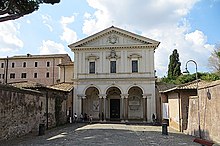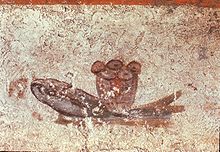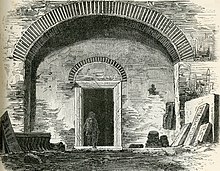User:Henrykuv
Jewish Catacombs of Rome[edit]

Jewish catacombs are distinguished from their Christian counterparts by various signs as well as the fact that Jewish people did not visit the dead in the catacombs. Parts of the Old Testament and the symbol of a candlestick with seven-branches have been spotted on the walls of Jewish catacombs.[1]
Due to high levels of humidity and temperature, bone preservation has been negatively affected in the catacombs. Scientists are unable to identify the sex of the dead due to the lack of preservation in the bones.[2]
- ^ Robertson, R. Reid (1933-11). "The Christian Catacombs of Rome". The Expository Times. 45 (2): 90–94. doi:10.1177/001452463304500208. ISSN 0014-5246.
{{cite journal}}: Check date values in:|date=(help) - ^ Cite error: The named reference
:0was invoked but never defined (see the help page).
Discoveries[edit]


Through research, it has been found that the population’s diet consisted of freshwater fish. Sample D9-W-XVI-8, considered to be a two-year-old child, shows that children in Ancient Rome were breastfed, and this child, in particular, was not yet exposed to weaning off of their mother. It can be determined that the child had not begun to wean due to the fact that the δ15N values had not begun to decline.[1]
Fish in the early Christian diet was not only for symbolic and religious reasons, but was also used as a meal to commemorate the dead. Fish also represented that the religious and the secular were intertwined in Roman society as fish was a concrete staple of the daily diet.[2][1]
- ^ a b Rutgers, L.V.; van Strydonck, M.; Boudin, M.; van der Linde, C. (2009-05). "Stable isotope data from the early Christian catacombs of ancient Rome: new insights into the dietary habits of Rome's early Christians". Journal of Archaeological Science. 36 (5): 1127–1134. doi:10.1016/j.jas.2008.12.015. ISSN 0305-4403.
{{cite journal}}: Check date values in:|date=(help) - ^ Cite error: The named reference
:1was invoked but never defined (see the help page).
| This user is a student editor in George_Washington_University/UW1020_M68_(Spring). |
